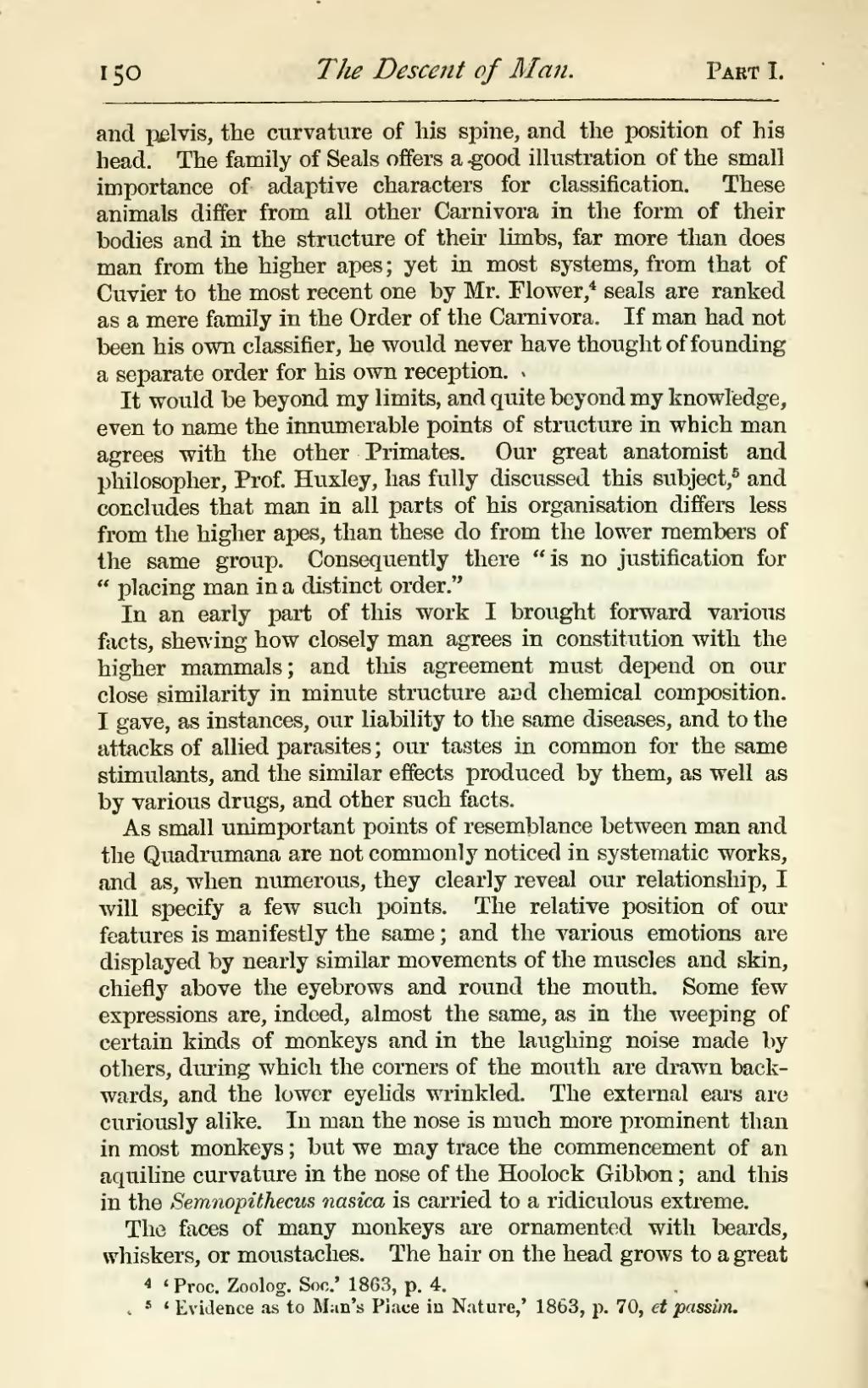and pelvis, the curvature of his spine, and the position of his head. The family of Seals offers a good illustration of the small importance of adaptive characters for classification. These animals differ from all other Carnivora in the form of their bodies and in the structure of their limbs, far more than does man from the higher apes; yet in most systems, from that of Cuvier to the most recent one by Mr. Flower,[1] seals are ranked as a mere family in the Order of the Carnivora. If man had not been his own classifier, he would never have thought of founding a separate order for his own reception.
It would be beyond my limits, and quite beyond my knowledge, even to name the innumerable points of structure in which man agrees with the other Primates. Our great anatomist and philosopher, Prof. Huxley, has fully discussed this subject,[2] and concludes that man in all parts of his organization differs less from the higher apes, than these do from the lower members of the same group. Consequently there "is no justification for placing man in a distinct order."
In an early part of this work I brought forward various facts, shewing how closely man agrees in constitution with the higher mammals; and this agreement must depend on our close similarity in minute structure and chemical composition. I gave, as instances, our liability to the same diseases, and to the attacks of allied parasites; our tastes in common for the same stimulants, and the similar effects produced by them, as well as by various drugs, and other such facts.
As small unimportant points of resemblance between man and the Quadrumana are not commonly noticed in systematic works, and as, when numerous, they clearly reveal our relationship, I will specify a few such points. The relative position of our features is manifestly the same; and the various emotions are displayed by nearly similar movements of the muscles and skin, chiefly above the eyebrows and round the mouth. Some few expressions are, indeed, almost the same, as in the weeping of certain kinds of monkeys and in the laughing noise made by others, during which the corners of the mouth are drawn backwards, and the lower eyelids wrinkled. The external ears are curiously alike. In man the nose is much more prominent than in most monkeys; but we may trace the commencement of an aquiline curvature in the nose of the Hoolock Gibbon; and this in the Semnopithecus nasica is carried to a ridiculous extreme.
The faces of many monkeys are ornamented with beards, whiskers, or moustaches. The hair on the head grows to a great
